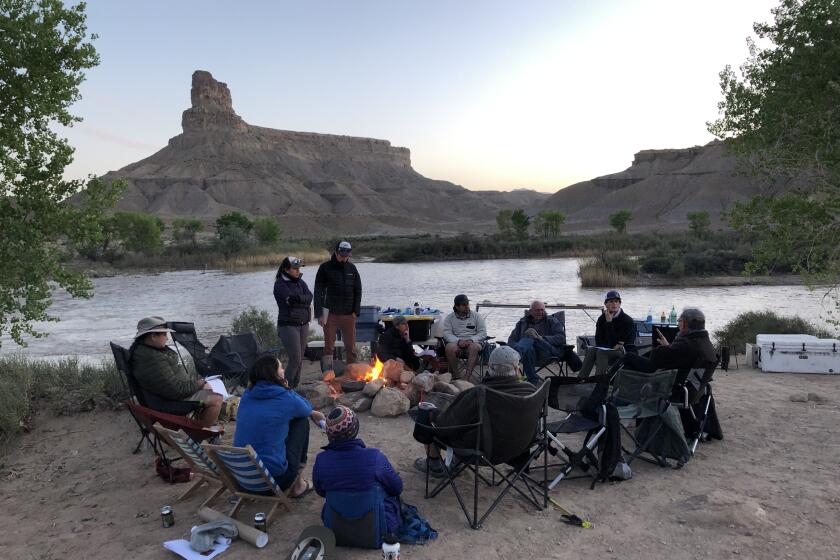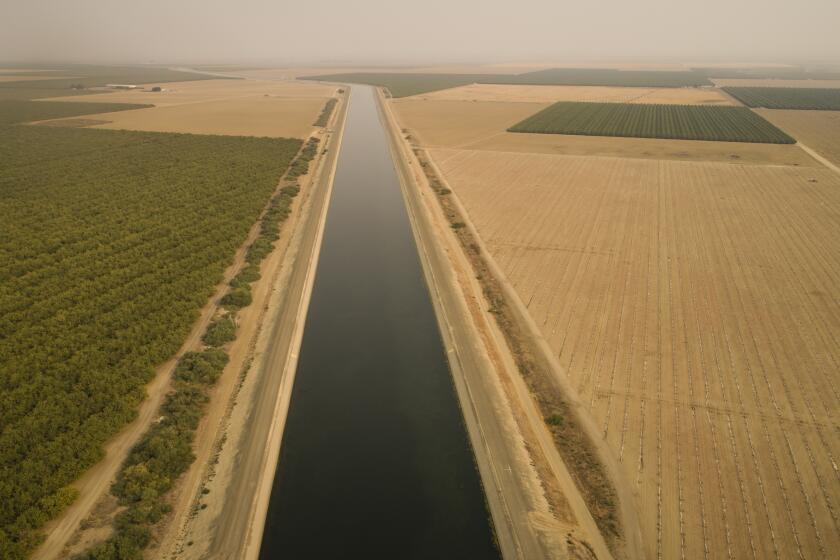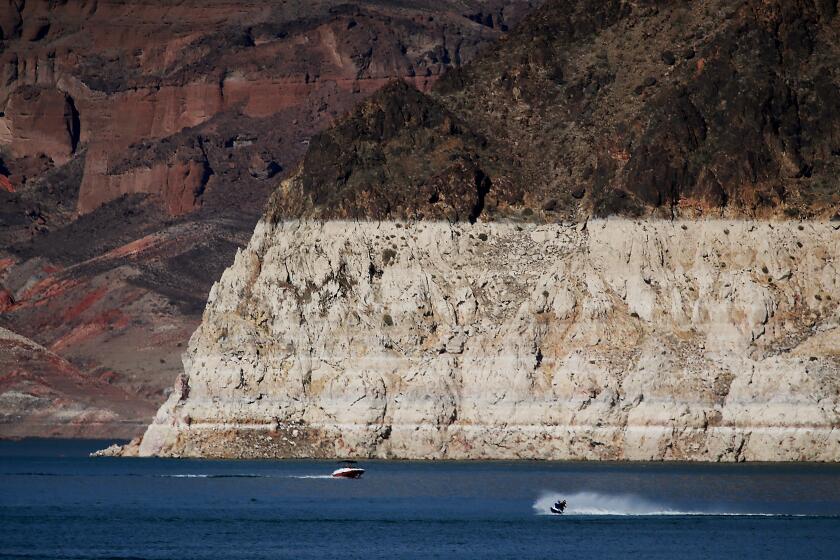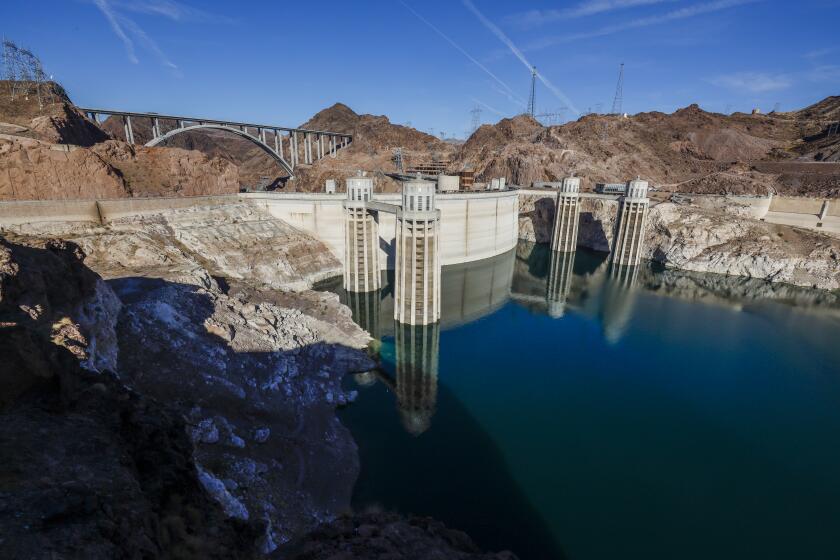Nevada considers allowing Las Vegas water agency to limit residential use
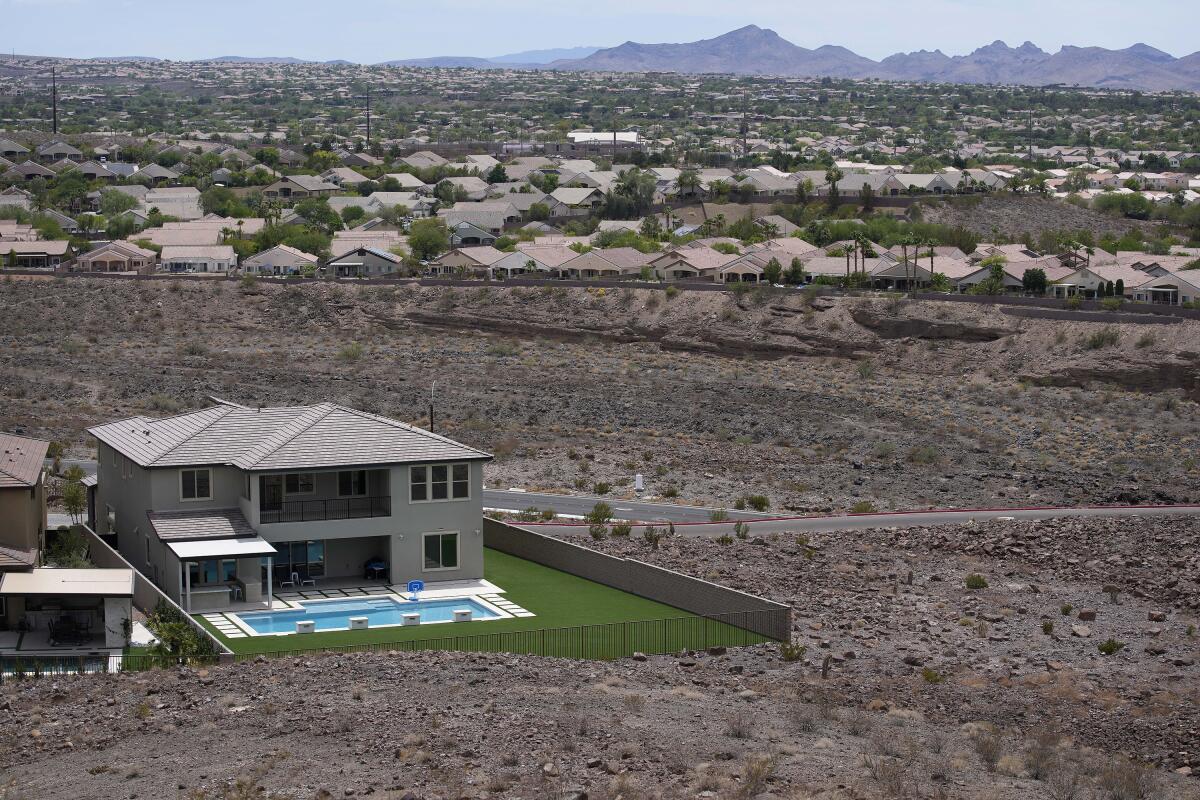
- Share via
CARSON CITY, Nev. — Nevada lawmakers are considering a remarkable shift in allowing the water agency that manages the Colorado River supply for Las Vegas to limit single-family residential use in the desert city and surrounding county.
It’s another potential step in a decades-long effort to ensure that one of the driest metropolitan areas in the U.S. has enough water. Already, ornamental lawns are banned in Las Vegas, new swimming pools have a size limit and the water used inside homes is recycled.
Although some agencies across the U.S. West tie increased water use to increased cost, Nevada could be the first to give a water agency, in this case the Southern Nevada Water Authority, the power to restrict what comes out of residents’ taps to about 30,000 gallons above the average use. It’s aimed mostly at the top 10% of water users, who use 40% of the water in the residential sector, spokesperson Bronson Mack said.
“It’s a worst-case scenario plan,” the bill’s sponsor, Democratic Assemblyman Howard Watts of Las Vegas, said of the residential limit. “It makes sure that we prioritize the must-haves for a home: your drinking water, your basic health and safety needs.”
The sweeping omnibus bill is one of the most significant to go before lawmakers this year in Nevada, one of seven states that rely on the Colorado River. Deepening drought, climate change and demand have sunk key Colorado River reservoirs that depend on melting snow to their lowest levels on record.
Lawmakers heard testimony on the bill Monday evening, which also includes connecting many homes that use unrecyclable septic tanks for wastewater to the county’s recyclable sewage system instead in the coming decades. It also establishes a program to pay at least 50% of the transition cost as they look to secure more state and federal funds to help.
The Colorado River is at a breaking point. We traveled across the watershed to examine what the crisis means for the Southwest.
Water agency officials stressed during the two-hour hearing that the residential caps would not be used immediately but, rather, if conditions were to become even more dire. The cap would be about 160,000 gallons annually — an amount that about 20% of the agency’s customers use — with the average single-family residence using close to 130,000 gallons annually, per the agency.
The authority hasn’t yet decided how it would implement or enforce the proposed limits, Mack said.
The residential-use limits received widespread support from water policy experts, the Las Vegas Chamber of Commerce and jurisdictions within the agency’s limits, and opposition came from some southern Nevada residents who testified through video from Las Vegas.
“[For] a single-family home, you need to take into consideration: How many adults, family members are in this home?” said Sarah Patton of Las Vegas. “We have grown children that are currently living with us. That is more water use.”
The Department of Water Resources announced an initial allocation of just 5% of requested supplies from the State Water Project.
Las Vegas relies on the Colorado River for 90% of its water supply. Nevada has lost about 8% of that supply already because of mandatory cuts implemented as the river dwindles further. Most residents haven’t felt the effects because the Southern Nevada Water Authority recycles a majority of water used indoors and doesn’t use the full allocation.
Nevada lawmakers banned ornamental grass at office parks, in street medians and in entrances to housing developments two years ago, a move that other cities adopted. Last summer, Clark County, which includes Las Vegas, capped the size of new swimming pools at single-family residential homes to about the size of a three-car garage.
By the next legislative session in 2025, drought conditions could be much worse, Watts said, and “we have to decide what usage to prioritize” before then. Yet the longer-term goal is for Nevada to be a leader in responsible use of the Colorado River’s dwindling supply — even with deeper cuts looming.
“It’s a sign to every other sector across the Colorado River Basin that we’re not going to wait for others,” Watts told lawmakers of the potential single-family residential caps. “We take the lead and work to reduce our consumptive use of water.”
One California water manager says Colorado River reservoirs aren’t likely to refill. Scientists agree that the region needs to plan for a drier future.
The main point of opposition for the bill was the phasing-out of home septic systems and connecting those residences to the sewage system, a major shift that would lead many homes to reroute their wastewater. Some Clark County residents were unconvinced of the idea of giving up their septic system or worried about the cost.
“This is too much of a burden for these targeted homeowners,” said Michele Tombari, who, like others, spoke fondly of her septic system and did not want to switch. “If you want us to change what was already approved, what we already paid for, you need to pay 100% to have us change that.”
Snow that has blanketed northern Nevada and parts of California serves as only a temporary reprieve from dry conditions.
Water from the Colorado River largely is used for agriculture in other basin states: Arizona, California, Wyoming, Utah, New Mexico and Colorado. Municipal water is a relatively small percentage of overall use.
How to divide Colorado River cuts: A breakdown of how California’s proposed water reductions compare with an offer submitted by six other states
As populations grow and climate change leaves future supplies uncertain, policymakers are paying close attention to all available options to manage water supplies.
Santa Fe, N.M., uses a tiered cost structure where rates rise sharply when residents reach 10,000 gallons during the summer months.
Scottsdale, Ariz., recently told residents in a community outside city limits that it no longer could provide a water source for them. Scottsdale argued that action was required under a drought-management plan to guarantee enough water for its own residents.
Elsewhere in the metro Phoenix area, water agencies aren’t currently discussing capping residential use, Sheri Trap of the Arizona Municipal Water Users Assn. said in an email. But cities such as Phoenix and Tempe have said they would cut down on usage overall.
More to Read
Sign up for Essential California
The most important California stories and recommendations in your inbox every morning.
You may occasionally receive promotional content from the Los Angeles Times.
